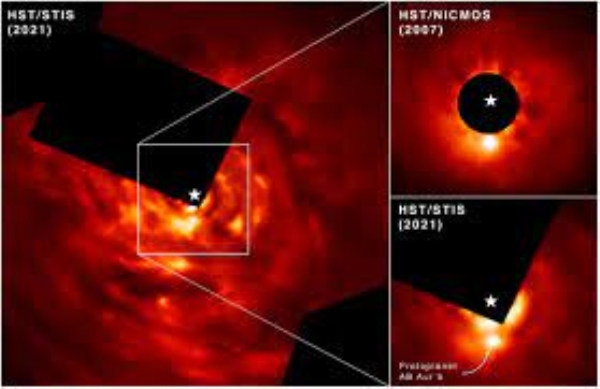Planet 9 times bigger than Jupiter found forming unconventionally
Sharing the images taken by Hubble, NASA said the planet, called AB Aurigae b, is probably about nine times bigger than Jupiter. About 5,000 planets beyond our solar system, or exoplanets, have been identified. This one, called AB Aur b, is among the largest.
Total Views |
Florida, April 05: Making a major discovery that challenges the current understanding of the planetary formation, NASA's Hubble telescope has spotted a gigantic Jupiter-like planet forming in an "unconventional way".

As per the Scientists, the planet is about nine times the mass of Jupiter at a remarkably early stage of formation- called protoplanets. The discovery supports a long-debated theory for how planets like Jupiter form, called "disk instability".
Sharing the images taken by Hubble, NASA said the planet, called AB Aurigae b, is probably about nine times bigger than Jupiter. About 5,000 planets beyond our solar system, or exoplanets, have been identified. This one, called AB Aur b, is among the largest.
"We think it is still very early on in its 'birthing' process," said astrophysicist Thayne Currie of the Subaru Telescope and the NASA-Ames Research Center, lead author of the study published on Monday in the journal Nature Astronomy. "Evidence suggests that this is the earliest stage of formation ever observed for a gas giant."
Almost all known exoplanets have orbits around their stars within the distance that separates our sun and its most faPlraway planet Neptune. But this planet orbits three times as far as Neptune from the sun and 93 times Earth's distance from the sun.
Its birth appears to be following a different process than the standard planetary formation model.
"The conventional thinking is that most - if not all - planets form by the slow accretion of solids onto a rocky core and that gas giants go through this phase before the solid core is massive enough to start accreting gas," said astronomer and study co-author Olivier Guyon of the Subaru Telescope and the University of Arizona.
In this scenario, protoplanets embedded in the disk surrounding a young star gradually grow out of dust- to boulder-sized solid objects and, if this core reaches several times Earth's mass, then begin accumulating gas from the disk.
"This process cannot form giant planets at a large orbital distance, so this discovery challenges our understanding of planet formation," Guyon said.
Instead, the researchers believe AB Aur b is forming in a scenario in which the disk around the star cools and gravity causes it to fragment into one or more massive clumps that form into planets.
"There's more than one way to cook an egg," Currie said. "And apparently there may be more than one way to form a Jupiter-like planet."
The star AB Aurigae is about 2.4 times more massive than our sun and almost 60 times brighter. It is about 2 million years old - an infant by stellar standards - compared to about 4.5 billion years for our middle-aged sun. The sun early in its life also was surrounded by a disk that gave rise to Earth and the other planets.
.
.

